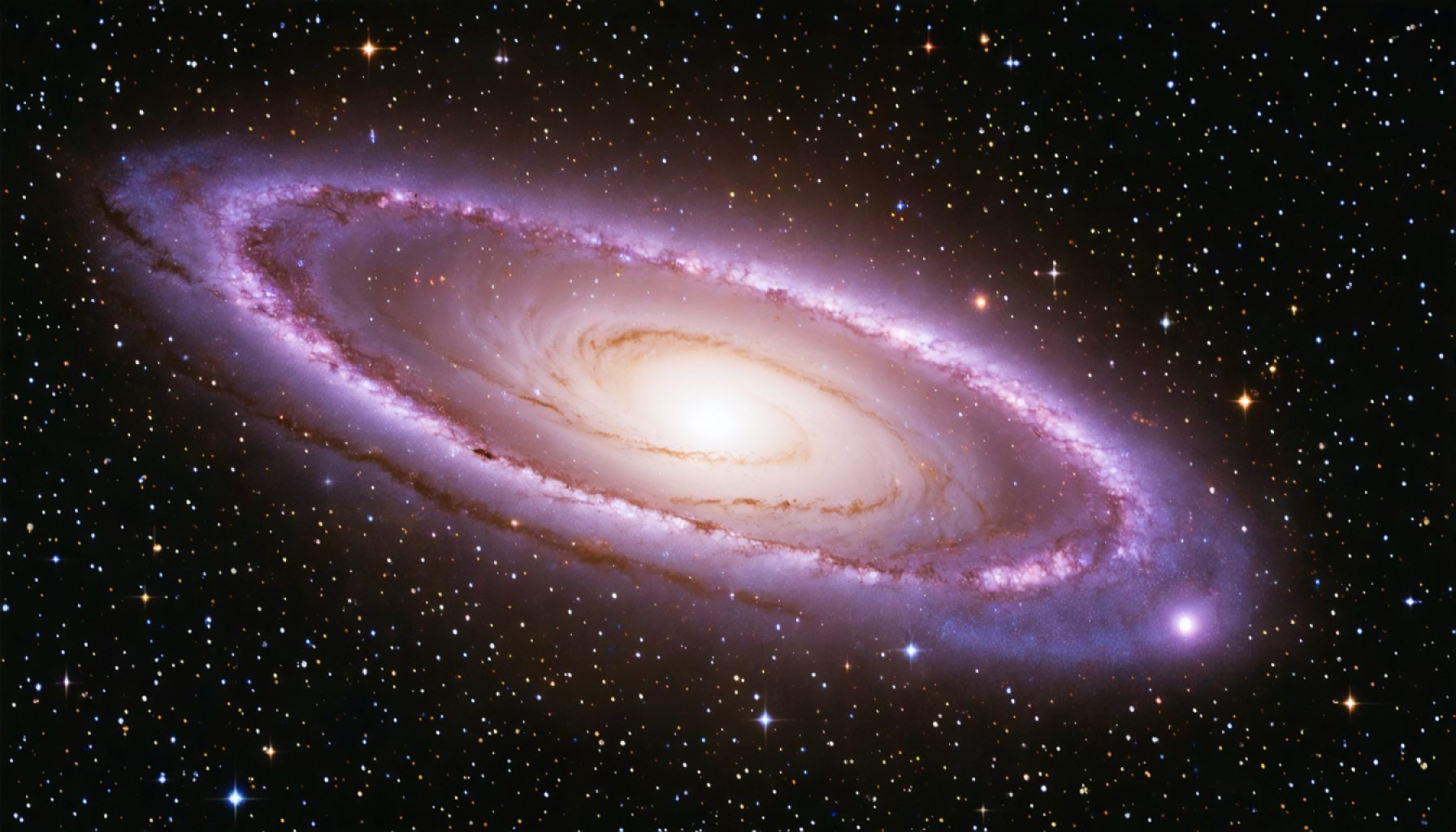- The discovery of JADES-GS-z14-0, the most distant galaxy ever recorded, has challenged previous assumptions about early cosmic history.
- This galaxy’s light, traveling for 13.4 billion years, indicates the universe was significantly complex when it was under 300 million years old.
- The presence of oxygen in JADES-GS-z14-0 suggests rapid chemical maturation, altering views on galaxy evolution timelines.
- Advanced technology from the James Webb Space Telescope (JWST) and ALMA enabled precise distance measurement and insight into early cosmic conditions.
- The discovery hints at a faster-paced universe with quick stellar cycles, prompting a reevaluation of galaxy formation models.
- Collaboration between JWST and ALMA highlights technological synergy, revolutionizing our understanding of cosmic evolution.
Beyond the shimmering veil of the cosmos, a celestial surprise awaits: the most distant galaxy ever recorded, JADES-GS-z14-0, holds secrets that defy our understanding of early cosmic history. Astronomers recently stumbled upon this ancient galaxy, shimmering with oxygen—a telltale sign of chemical maturity—forcing scientists to rethink the foundations of cosmic evolution.
Nestled in the farthest reaches of the universe, JADES-GS-z14-0 is a time capsule from when the universe was a mere toddler, less than 300 million years old. Light from this galaxy has journeyed 13.4 billion years to reach Earth, painting a portrait of an embryonic universe that contradicts previous assumptions. With the advent of high-precision data from the Atacama Large Millimeter/submillimeter Array (ALMA) and initial insights from the James Webb Space Telescope (JWST), researchers have uncovered clues that suggest galaxies matured much faster than anticipated.
Thoughts of a primordial universe filled with galaxies just beginning their paths of development have been shaken with the discovery of oxygen in JADES-GS-z14-0. This precious element hints at a cosmic landscape bustling with youthful activity: stars being born and dying, spreading their elemental bounty throughout the galaxy with unprecedented speed. This “teenager” of a galaxy, perched where “babies” should dwell, perplexes the astronomical community, now questioning timelines of stellar evolution.
Such a discovery doesn’t just rattle the scientific cage—it revolutionizes it. The ability to measure the galaxy’s distance with astonishing precision, thanks to strides in astronomical instrumentation, highlights an intricate dance between technology and cosmic exploration. The JWST’s luminous eyes first pinpointed JADES-GS-z14-0, while ALMA’s expertise confirmed its staggering remoteness, opening a window to the universe’s fledgling days.
The revelation of a mature galaxy thriving in the universe’s formative years revives debate on when and how these stellar cities came to be. This isn’t just a wrinkle in time—it’s potentially a paradigm shift. A fast-paced universe, buzzing with rapid stellar cycles, challenges existing models and ignites new questions about the very nature of galaxy formation.
In unearthing these cosmic mysteries, the collaboration between JWST and ALMA underscores the power of synergy in unveiling the universe’s earliest secrets. As astronomers stand on the cusp of confidently reconstructing the narrative of cosmic evolution, one fact remains vividly clear: the universe, in its youth, was a far more complex and vibrant arena than we dared to dream. And as each new discovery beams to Earth, it invites us all to reimagine the universe—transporting wonder from the elegies of ancient light to the vibrant tapestry of modern science.
The Universe’s Hidden Secrets: Meet JADES-GS-z14-0 – The Galaxy That Defies Time
Understanding JADES-GS-z14-0: A New Cosmic Paradigm
The discovery of JADES-GS-z14-0, the most distant galaxy ever recorded, has captivated astronomers worldwide by challenging preconceived notions of the early universe. Positioned a staggering 13.4 billion light-years away, this ancient galaxy offers unprecedented insights into the infancy of cosmic evolution. Here’s a deep dive into the intricacies surrounding this fascinating celestial find.
Real-World Use Cases and Implications
– Accelerated Stellar Evolution: The presence of oxygen within JADES-GS-z14-0 indicates that stars formed, lived, and died in rapid cycles. These processes enriched the surroundings with heavier elements, contradicting the belief that the early universe’s galaxies were primitive and undeveloped.
– Revisiting Cosmological Models: With galaxies seemingly maturing faster than previously expected, theoretical models of galaxy formation and evolution are under scrutiny. Researchers are tasked with reconciling these observations with the established timeline of cosmic history.
– Technological Synergy: The joint efforts of the James Webb Space Telescope (JWST) and the Atacama Large Millimeter/submillimeter Array (ALMA) exemplify the power of collaborative astronomy. JWST’s ability to capture high-resolution images across vast distances, coupled with ALMA’s precision in measuring galactic distances, enhances our understanding of the universe’s infancy.
Industry Trends and Market Forecasts
– Astronomical Instrumentation Advancements: Driven by discoveries like JADES-GS-z14-0, investment in advanced astronomical instrumentation is poised to increase. Cutting-edge technology capable of probing deeper into space will likely gain significant attention from both public and private sectors.
– Interdisciplinary Research Growth: As the discovery challenges existing scientific assumptions, there is growing encouragement for interdisciplinary approaches combining astrophysics, chemistry, and cosmology in exploring these celestial phenomena.
Controversies and Limitations
– Data Interpretation Challenges: The unprecedented data from JADES-GS-z14-0 requires careful analysis to avoid misinterpretation that could mislead the scientific community regarding the nature of early galaxies.
– Technological Constraints: While JWST and ALMA have revolutionized cosmic observation, there’s always a quest for even more refined technology to minimize uncertainties and provide further clarity.
Actionable Recommendations
1. Stay Updated with Continuous Discoveries: Engage with platforms such as the European Space Agency and NASA for cutting-edge astronomical developments. European Space Agency, NASA
2. Enhance Your Astronomy Knowledge: Enroll in online courses related to cosmology and astrophysics offered by leading academic institutions to better comprehend such monumental findings.
3. Participate in Community Forums: Join astronomy interest groups and forums. Exchange ideas, discuss recent studies, and stay informed on ongoing debates within the scientific community.
Conclusion
The discovery of JADES-GS-z14-0 is a catalyst, provoking new questions about the universe and its origins. As astronomers worldwide recalibrate their understanding of cosmic history, this galaxy’s existence encourages us all to look beyond and discover the universe’s hidden depths. Embrace the wonder it evokes, for the secrets of the universe are only just beginning to unravel.
